10 Things Your Nails Say About Your Internal Health
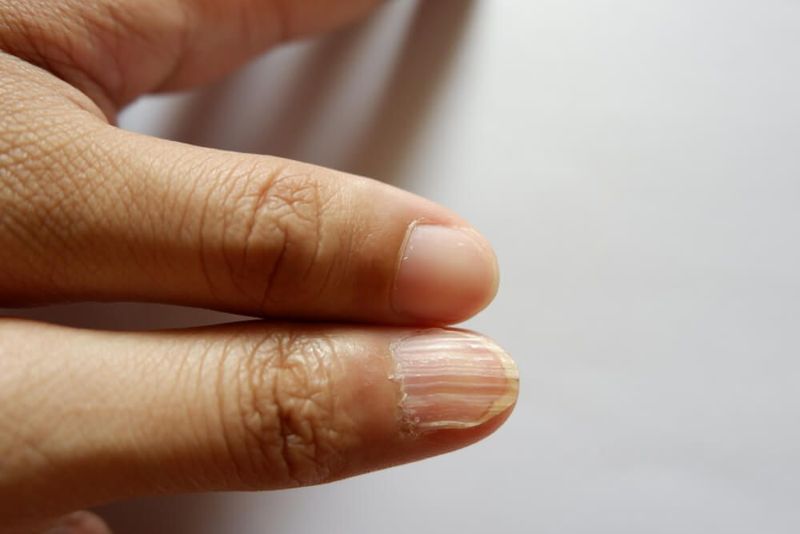
Your fingernails work like tiny windows into your body’s overall health. Many people think nails are just for looks, but doctors often check them during exams because they can reveal important clues about what’s happening inside you. Changes in color, shape, or texture might signal anything from poor nutrition to serious health conditions that need attention.
1. Pale or White Nail Beds Signal Iron Deficiency
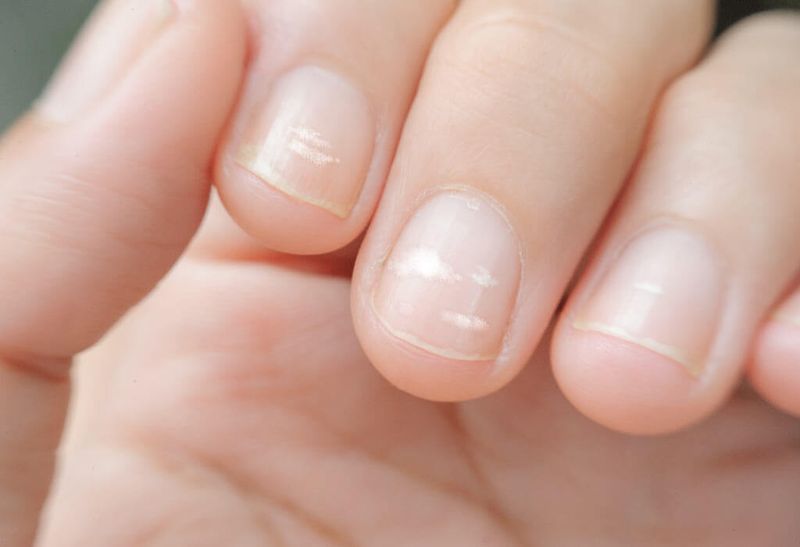
Press down on your fingernail and watch what happens when you let go. Healthy nails should quickly return to a pink color, but pale or white nail beds might mean your body lacks iron.
Iron deficiency anemia affects millions of people worldwide. Your body needs iron to make healthy red blood cells that carry oxygen throughout your system.
Without enough iron, your blood can’t deliver proper oxygen to your nail beds. Eating iron-rich foods like spinach, red meat, and beans can help restore that healthy pink glow to your nails.
2. Yellow Nails May Indicate Liver Problems
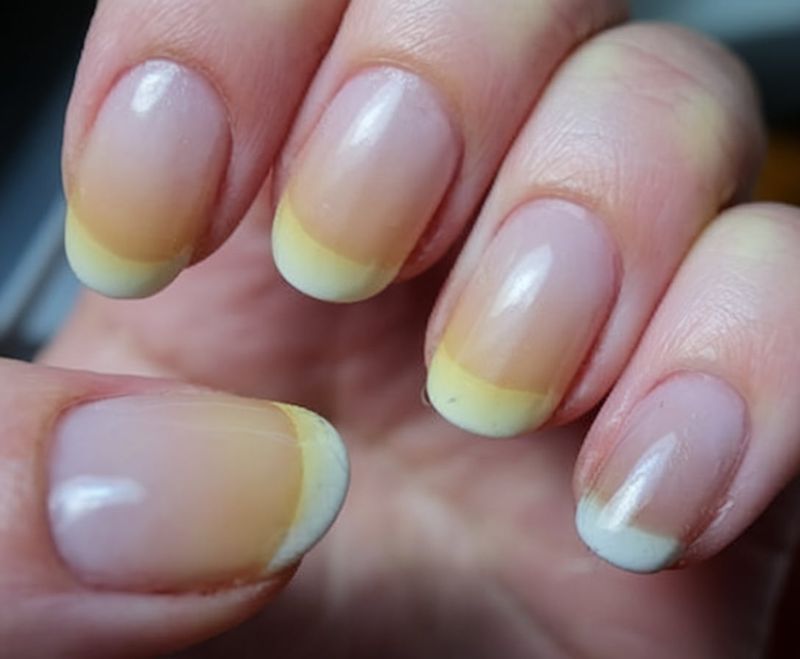
When nails turn yellow without nail polish, your liver might be sending a distress signal. Yellow discoloration often appears gradually and affects multiple nails at once.
Liver conditions can cause a buildup of bilirubin in your bloodstream. This yellow pigment then shows up in various parts of your body, including your nails and even your eyes.
Diabetes and thyroid disorders can also cause yellow nails. If you notice persistent yellowing along with fatigue or other symptoms, scheduling a doctor’s appointment becomes essential for proper testing and treatment.
3. Spoon-Shaped Nails Reveal Serious Nutritional Deficits
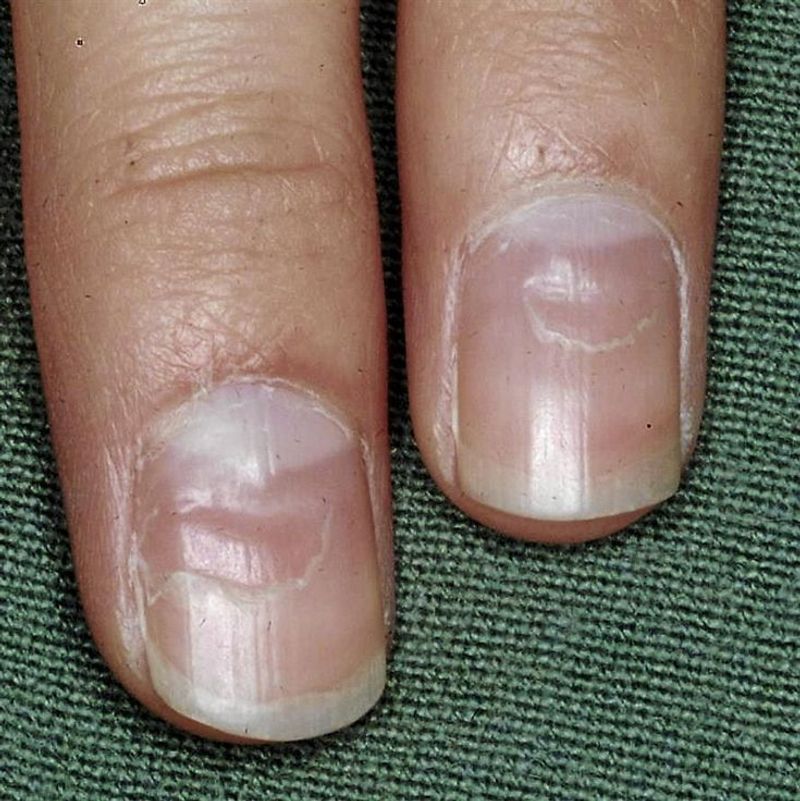
Imagine your nails curving inward like tiny spoons instead of growing straight. This strange shape, called koilonychia, often points to severe iron deficiency or other nutritional problems.
Spoon nails develop when your body desperately lacks the nutrients needed for healthy nail growth. The nail plate becomes so thin and weak that it actually curves backward.
Heart disease and hypothyroidism can also cause this unusual nail shape. Blood tests can help identify the underlying cause, and proper treatment usually helps nails return to their normal curved shape over several months.
4. Blue Nail Beds Warn of Oxygen Problems

Blue fingernails aren’t just a fashion statement – they’re your body’s way of waving a red flag about oxygen levels. Medical professionals call this condition cyanosis.
Heart problems, lung diseases, or circulation issues can prevent your blood from carrying enough oxygen. When oxygen-poor blood reaches your nail beds, they take on a bluish tint.
Cold weather can temporarily cause blue nails, but persistent blue coloring needs immediate medical attention. Conditions like asthma, pneumonia, or heart failure might be the culprit, and quick treatment can make a life-saving difference for your overall health.
5. Clubbed Nails Point to Lung and Heart Disease
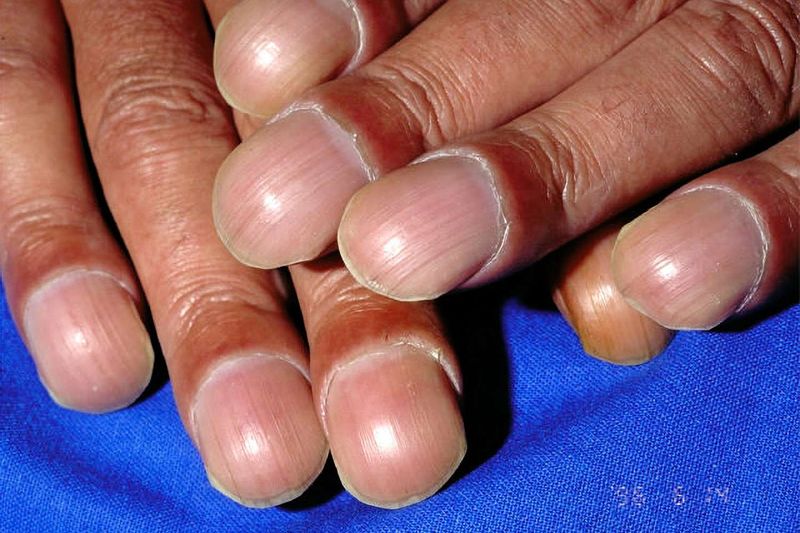
Clubbed nails look like tiny drumsticks, with fingertips that become enlarged and nails that curve dramatically downward. This distinctive shape develops slowly over months or years.
Lung cancer, heart disease, and other serious conditions that reduce oxygen in your blood often cause nail clubbing. The exact mechanism isn’t fully understood, but it’s linked to chronic low oxygen levels.
Inflammatory bowel disease and liver cirrhosis can also trigger nail clubbing. Since this sign often appears before other symptoms, paying attention to nail changes can help catch serious diseases early when treatment works best.
6. Horizontal Ridges Reflect Major Health Stresses
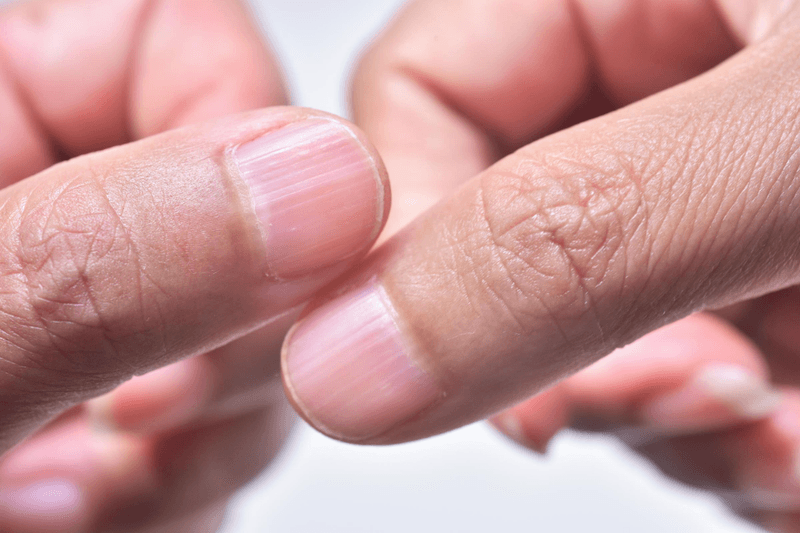
Deep horizontal lines across your nails, called Beau’s lines, tell the story of significant health events your body has endured. These ridges form when nail growth temporarily stops or slows down dramatically.
Serious illnesses, high fevers, or major surgeries can trigger these horizontal ridges. Chemotherapy treatments and severe infections also commonly cause Beau’s lines to appear weeks later.
Since nails grow slowly, these lines serve like a timeline of your health history. Severe malnutrition or zinc deficiency can also create similar patterns, making proper nutrition crucial for maintaining smooth, healthy nail growth patterns.
7. Brittle Nails Suggest Thyroid Disorder
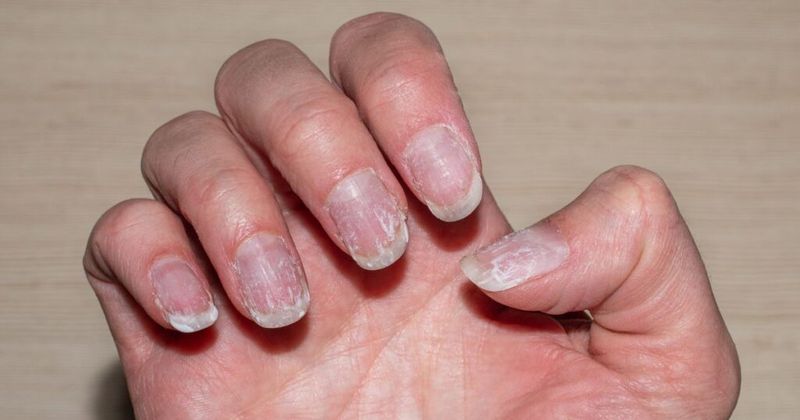
Nails that constantly break, split, or crumble might be telling you about thyroid problems brewing inside your body. Both overactive and underactive thyroid conditions affect nail health significantly.
Hypothyroidism often makes nails grow slowly and become thick and brittle. Hyperthyroidism can cause nails to become thin and separate from the nail bed easily.
Thyroid hormones control many body functions, including how fast your cells grow and repair themselves. Blood tests can check your thyroid hormone levels, and proper medication usually helps restore normal nail strength and growth patterns within several months of treatment.
8. White Spots Indicate Zinc Deficiency or Trauma
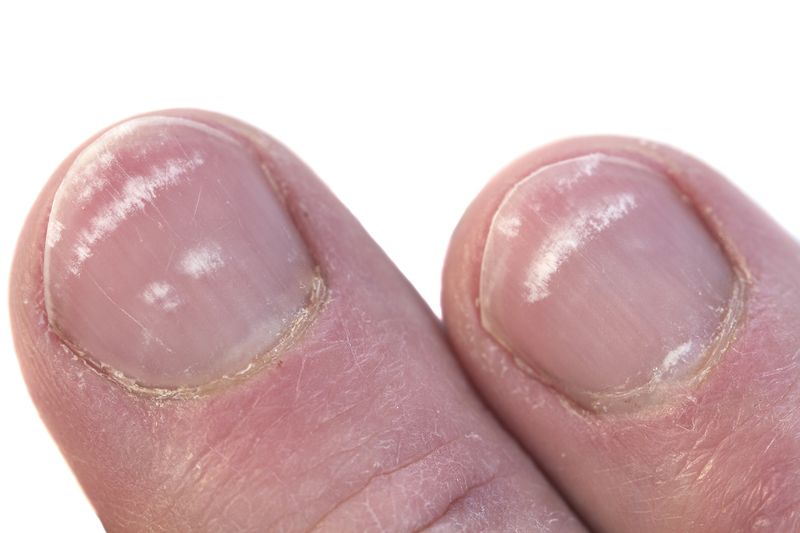
Small white spots or streaks on nails often get blamed on calcium deficiency, but they usually point to zinc shortages or minor injuries instead. These spots appear weeks after the actual cause.
Zinc plays a crucial role in nail growth and protein formation. Without adequate zinc, your nails can’t form properly, creating those telltale white marks as they grow out.
Minor bumps or injuries to the nail matrix can also create white spots. Severe dieting, eating disorders, or digestive problems that prevent nutrient absorption commonly lead to zinc deficiency and subsequent nail changes that take months to fully grow out.
9. Dark Lines May Signal Serious Melanoma Risk
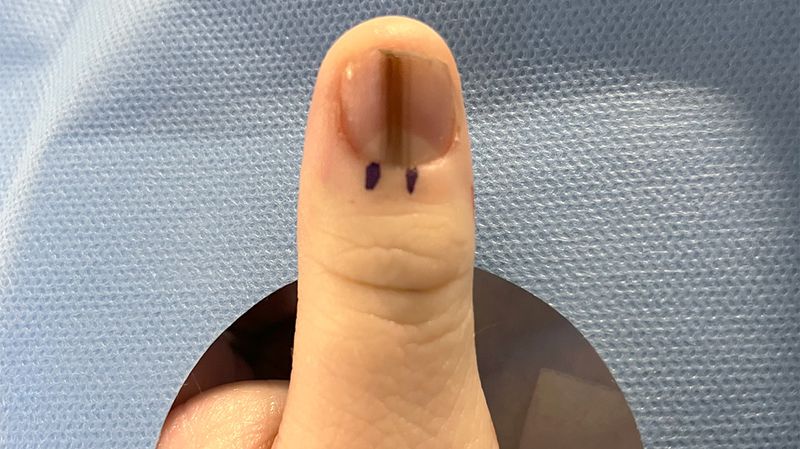
Dark vertical lines running from your nail bed to the tip deserve immediate medical attention, especially if they’re new, changing, or affecting just one nail. These could indicate melanoma.
Melanoma under the nail, called subungual melanoma, appears more commonly in people with darker skin tones. Unlike other nail changes, this condition can be life-threatening if not caught early.
Normal pigmentation can also cause dark lines, but any changes in width, color, or appearance need professional evaluation. Dermatologists can perform biopsies to determine whether dark nail streaks are harmless pigmentation or dangerous cancer cells requiring immediate treatment.
10. Slow Nail Growth Reveals Poor Circulation Issues
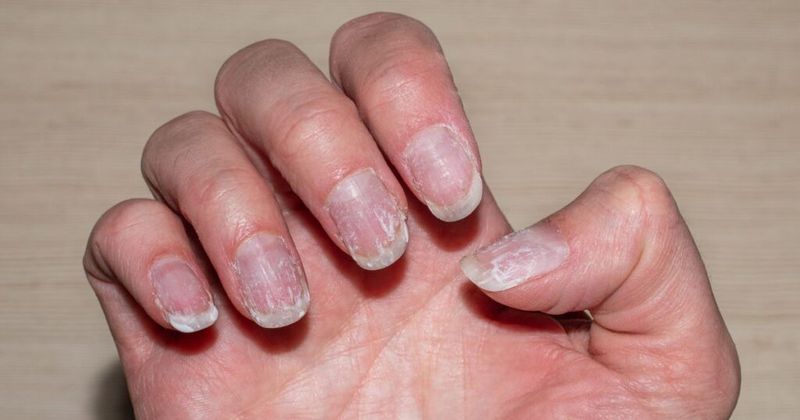
Nails that grow unusually slowly might be revealing circulation problems or underlying health conditions that affect blood flow throughout your body. Healthy nails typically grow about 3 millimeters monthly.
Diabetes, peripheral artery disease, and heart conditions can reduce blood flow to your extremities. Poor circulation means fewer nutrients reach your nail matrix where growth occurs.
Age naturally slows nail growth, but dramatic changes warrant medical evaluation. Improving circulation through exercise, managing diabetes, and treating heart conditions can help restore normal nail growth rates and improve overall health outcomes significantly.

Comments
Loading…